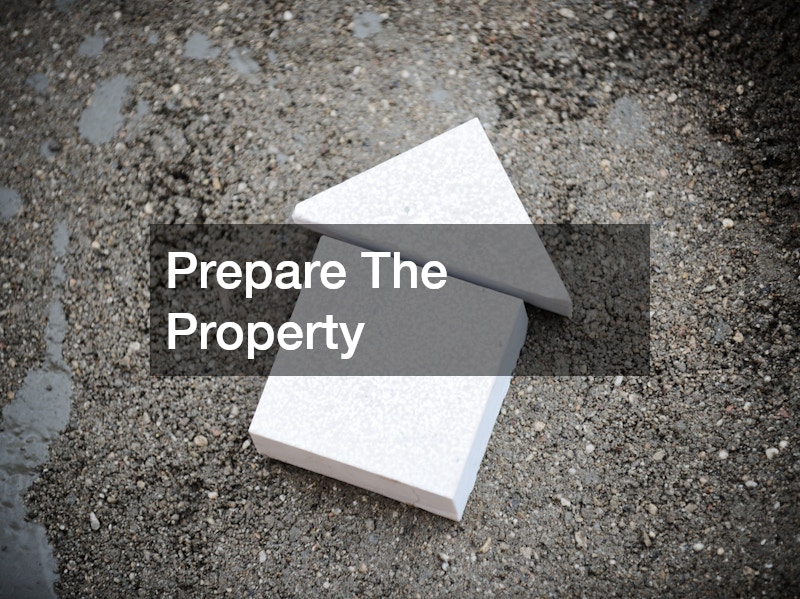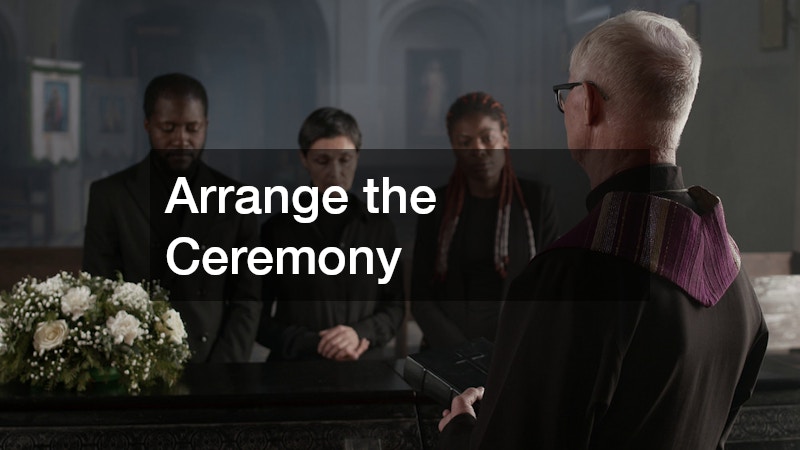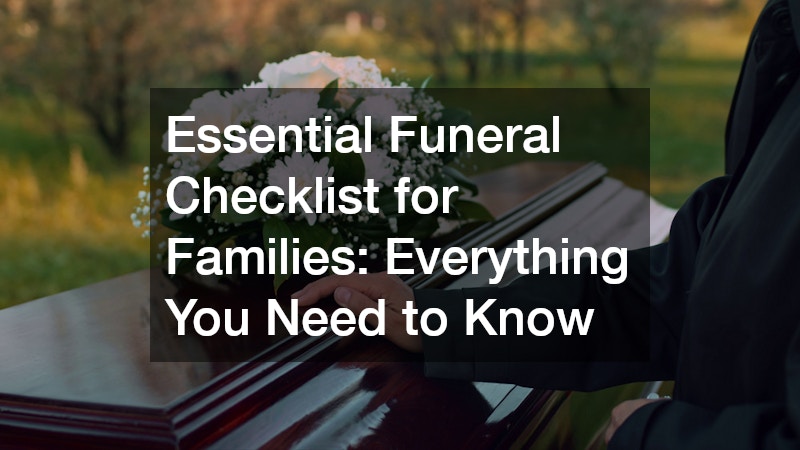Losing a loved one is a challenging experience for any family. In addition to coping with grief, there are numerous practical tasks that need attention. Using a structured checklist can help make this difficult time more manageable by providing a clear guide on what to do, what decisions need to be made and which services might be required. From legal and financial matters to organising the funeral itself, having an organised approach ensures that nothing important is overlooked.
Every family’s situation is unique, but understanding the main steps in arranging a funeral can reduce stress and confusion. This guide provides families with a reliable framework, helping them address both immediate and longer-term needs. Whether it involves preparing property, selecting a ceremony type or choosing a burial package, following a checklist provides reassurance that each step is handled properly. With clear organisation, relatives can focus on supporting one another and honouring their loved one, rather than feeling overwhelmed by logistical details.
Prepare the Property

Handling a family property after the passing of a loved one requires careful planning. It is often one of the first practical steps families need to consider, especially if the property is to be sold or managed by heirs. Tasks can include securing the home, ensuring bills are paid and coordinating with legal representatives regarding wills or estate matters. Keeping organised records and communicating clearly with all involved parties can prevent misunderstandings and unnecessary delays. Preparing the property with intention provides peace of mind and ensures that the family can focus on grieving without additional stress.
More specifically, families may need to decide whether the property will remain in the family, be rented out or put on the market. If selling, coordinating with real estate agents, obtaining valuations and preparing the home for viewings are essential steps. Maintaining the property in a presentable and secure condition is critical for protecting its value. By using a funeral checklist for families, the process of preparing a house for sale can be integrated alongside other arrangements, ensuring that each responsibility is addressed systematically and without last-minute pressure.
Arrange the Ceremony

Planning a funeral ceremony involves making decisions that reflect the wishes of the deceased while supporting the family’s needs. The type of ceremony, location and timing are important considerations. Funerals can be large, small, traditional or more modern and each choice requires coordination with service providers, clergy or celebrants. Ensuring that announcements and notifications reach friends and family in a timely manner is also part of the planning process. Arranging the ceremony with careful attention to detail helps create a respectful and meaningful farewell that honours the life of the loved one.
Focusing on specific options such as direct cremations can help families manage costs and simplify logistics. This approach offers a straightforward process that does not require a formal service beforehand, which may suit families looking for a more private farewell. Choosing this option involves selecting a reputable provider, understanding legal requirements and coordinating the collection and handling of the remains. Including these considerations in a funeral checklist for families ensures that every aspect, from paperwork to timing, is accounted for, making the process less stressful and more predictable.
Select the Package

Selecting the right burial package is an important step in planning a funeral. Packages vary widely and can include elements such as caskets, floral arrangements, venue hire, transportation and additional services like catering or memorial items. Comparing options allows families to choose one that meets both their budget and the expectations they have for the ceremony. Being clear on what is included ensures there are no hidden costs and that every aspect of the funeral is covered. Taking the time to evaluate options also provides a sense of control during a period when families may feel vulnerable.
When making this choice, it is helpful to consider the specific needs of the family and the wishes of the deceased. Some options offer flexibility, allowing for personalised touches such as customised ceremonies, specific locations or commemorative items. Families may wish to visit multiple providers to assess what is included and what can be adapted to their situation. Including these considerations in a checklist helps coordinate decisions alongside other responsibilities, ensuring the ceremony proceeds smoothly and reflects the significance of the occasion.
A funeral checklist for families is a valuable tool for guiding relatives through one of life’s most difficult times. By preparing the property, arranging the ceremony and selecting a burial package, families can manage practical responsibilities while focusing on emotional support. Following a structured approach helps reduce confusion, streamline decision-making and ensure that no important detail is overlooked. Using a checklist not only assists with logistics but also provides reassurance that each step is handled thoughtfully. Ultimately, this method allows families to honour their loved one with care and consideration, while maintaining organisation during a challenging period.



